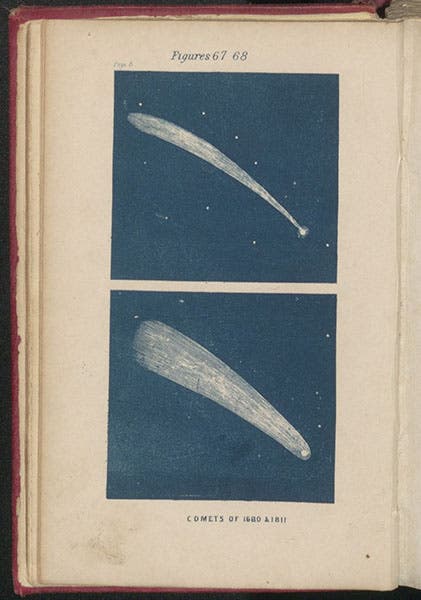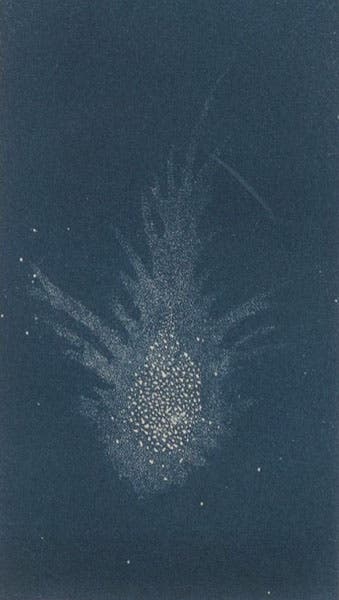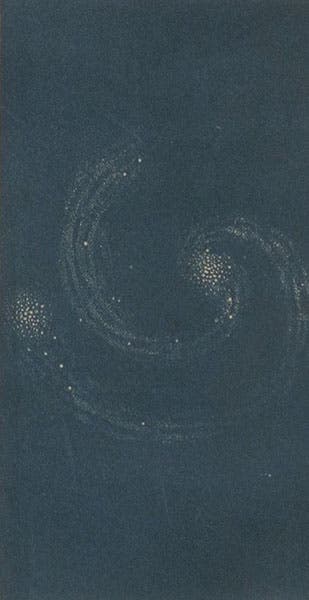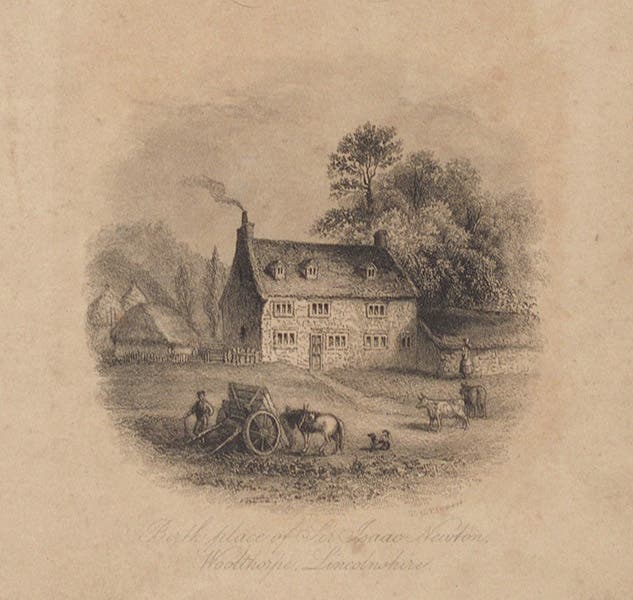Scientist of the Day - Denison Olmsted
Denison Olmsted, an American astronomer, was born June 18, 1791, in East Hartford, Conn., not far from where I grew up. He graduated from Yale, spent some time teaching at the University of North Carolina, and then returned to Yale in 1825 to become professor of astronomy and natural philosophy. Olmsted is best known for his studies of the Great Meteor Storm of 1833. The event occurred over much of North America, and at its peak, some 100,000 meteors per hour were streaking down toward earth. Olmsted observed the storm and noted that the meteors radiated from a point in the constellation Leo. He further noted that the radiating point moved with the stars, suggesting that the meteors had a cosmic origin. Olmsted sent out a call for more observations to his colleagues in America and Europe, and he published those various reports in the American Journal of Science (conveniently published at Yale) in late 1833. In a follow-up article in the next issue of the Journal, he published his conclusions about the extra-terrestrial origins of meteor storms. This marks the birth of the study of meteor showers. The storm of 1833 was an occurrence of the annual Leonid meteor shower, named for the radiating point from which the meteors stream, and that Olmsted determined. The Leonids appear every November, but they are especially profuse every 33 years. 1833 was one of those bonus years. We have the two journal articles that Olmsted wrote in our serials collection. I read them out of curiosity, and I was struck with how much garbage Olmsted had to wade through in trying to understand the nature of the meteor shower. Some observers noted that the temperature dropped drastically after the storm; that high winds arose; that auroras increased; and many claimed that the radiating point moved with the earth, not the stars. Somehow Olmsted managed to sift through all this, discard the dross, and come up with the essential facts.
It is not so well known that Olmsted was a gifted writer of popular astronomy texts. He published Letters on Astronomy, Addressed to a Lady in 1840; the book was then enlarged and reprinted as The Mechanism of the Heavens (1850). We do not have the first work, but we do have the 1850 and 1853 editions of The Mechanism of the Heavens.
Popular astronomy as a genre first appeared in the 1840s, and we have quite a few examples in the Library, works by Thomas Dick, John Pringle Nichol, and James Breen, all of whom have been discussed in this series. A common feature of such books is a profusion of illustrations, which makes sense if one is trying to attract a popular audience. The images in Olmsted’s Mechanism of the Heavens are especially striking, as they are relief prints with a blue background. All of our images today except the portrait come from this work.
We show Jupiter and Saturn (first image); the comets of 1680 (Newton’s comet) and 1811 (The Great Comet; fourth image, above); the Crab Nebula (M1; fifth image, above); and the Whirlpool Nebula (M51; sixth image, just above). The latter two are interesting because they are based on the drawings made and published by William Parsons, Lord Rosse, at his giant reflector in Ireland, which saw its first light in 1844. Olmsted was surely aware of these discoveries, but for some reason, those two plates, and a half-a-dozen others of nebulae, were taken by the publishers from a work by Ormsby Macknight Mitchel (whom we will feature later this summer) and tacked on at the end. I do not know why Olmsted did not provide these himself. Perhaps this book was not as revised and updated as it could have been.
We thought we would also show the engraved vignette that appears on the book’s half-title page (seventh image, just above). It depicts Newton’s birthplace at Woolsthorpe, Lincolnshire. Newton was a great hero to astronomers in Victorian England. There is even a full-page portrait of Newton in the book, which we decided not to include, as it is a copy of a known portrait, and not a very good copy. But the vignette is charming.
Surprisingly, there is no illustration in the book of the Great Meteor Shower of 1833. Olmsted discusses it extensively in the text, and he does include several simple text diagrams. But an attempt to capture the appearance of the heavens on that glorious night of Nov. 13, 1833 is lacking. I do not know why.
Dr. William B. Ashworth, Jr., Consultant for the History of Science, Linda Hall Library and Associate Professor emeritus, Department of History, University of Missouri-Kansas City. Comments or corrections are welcome; please direct to ashworthw@umkc.edu.











![Columbine, hand-colored woodcut, [Gart der Gesundheit], printed by Peter Schoeffer, Mainz, chap. 162, 1485 (Linda Hall Library)](https://assets-us-01.kc-usercontent.com:443/9dd25524-761a-000d-d79f-86a5086d4774/3829b99e-a030-4a36-8bdd-27295454c30c/gart1.jpg?w=210&h=210&auto=format&fit=crop)
